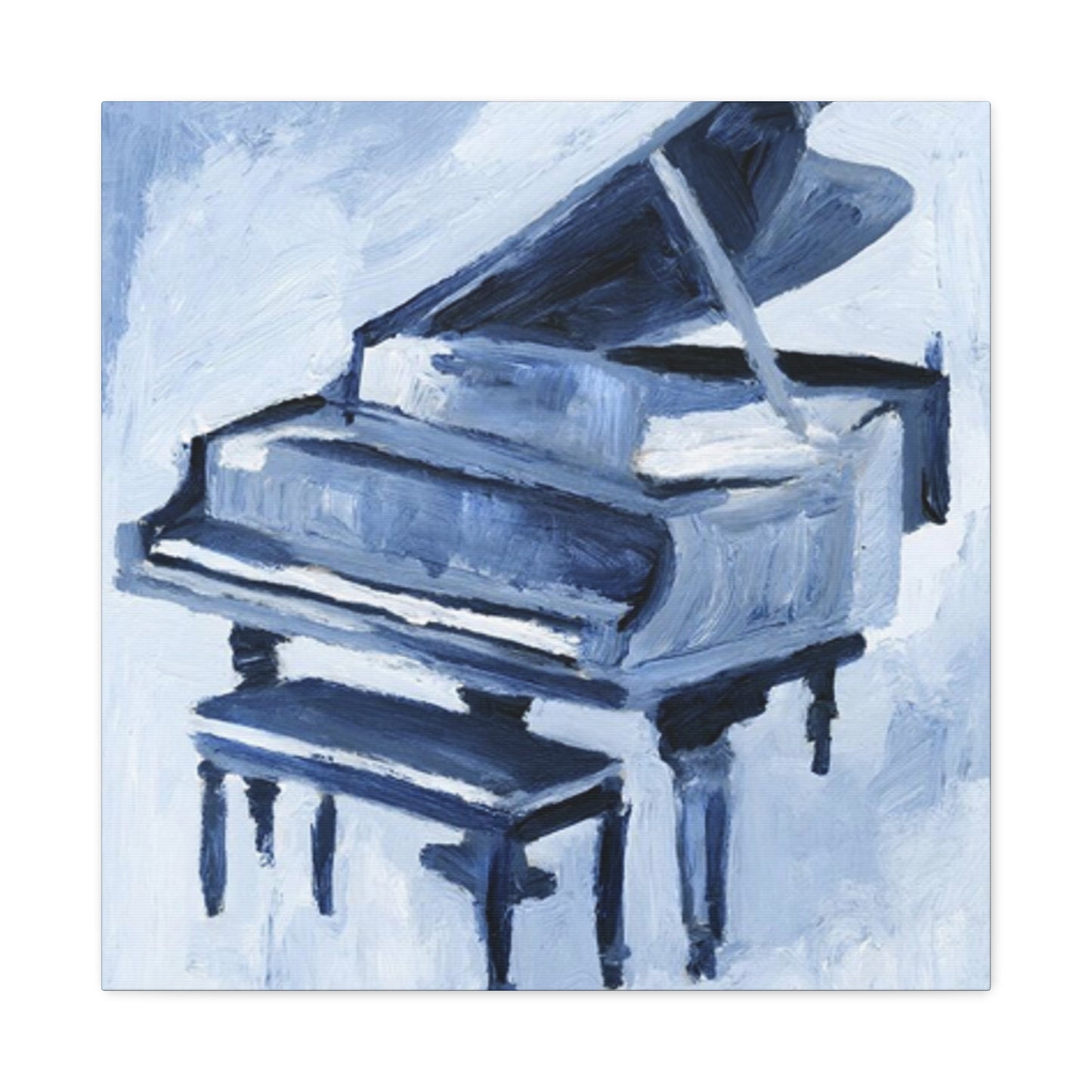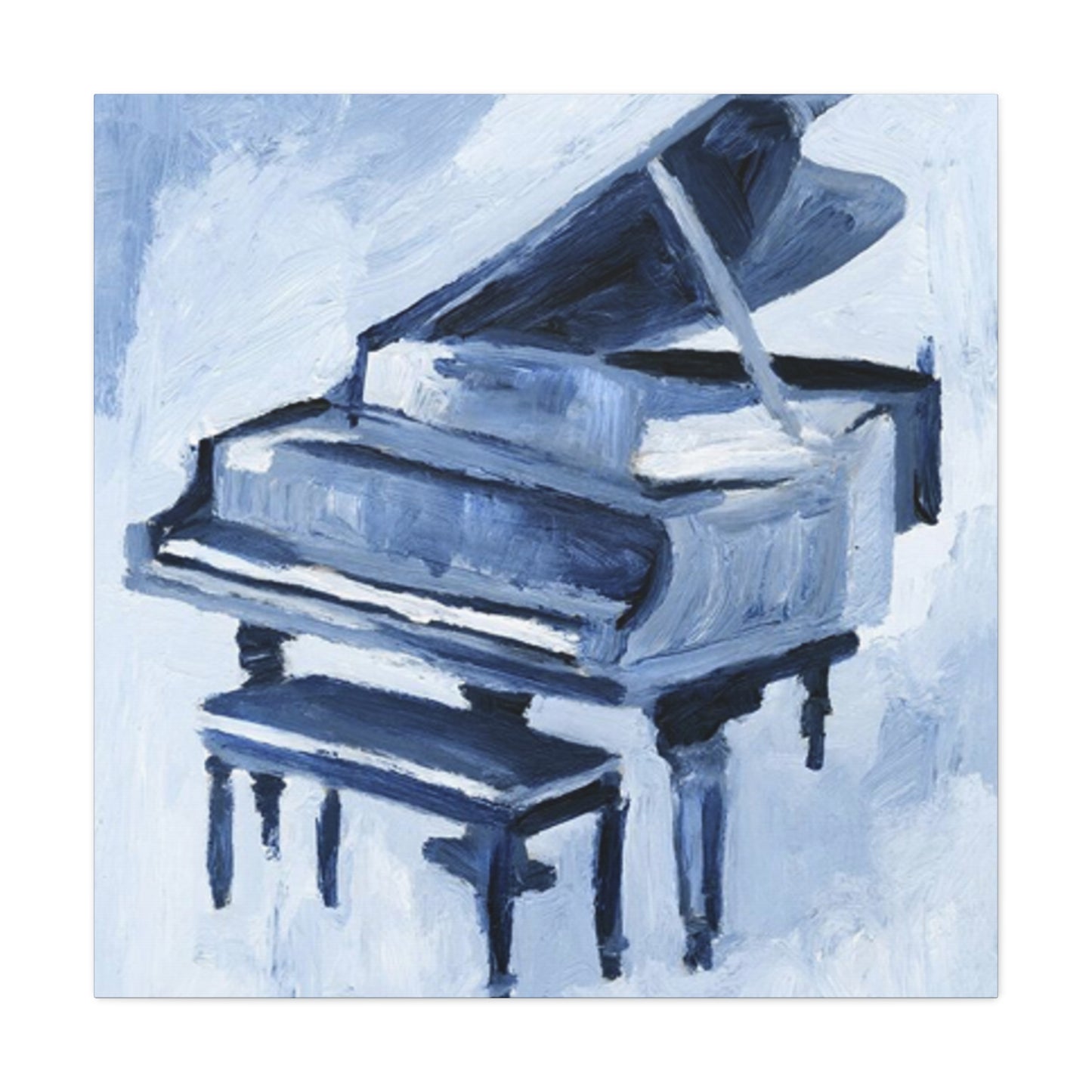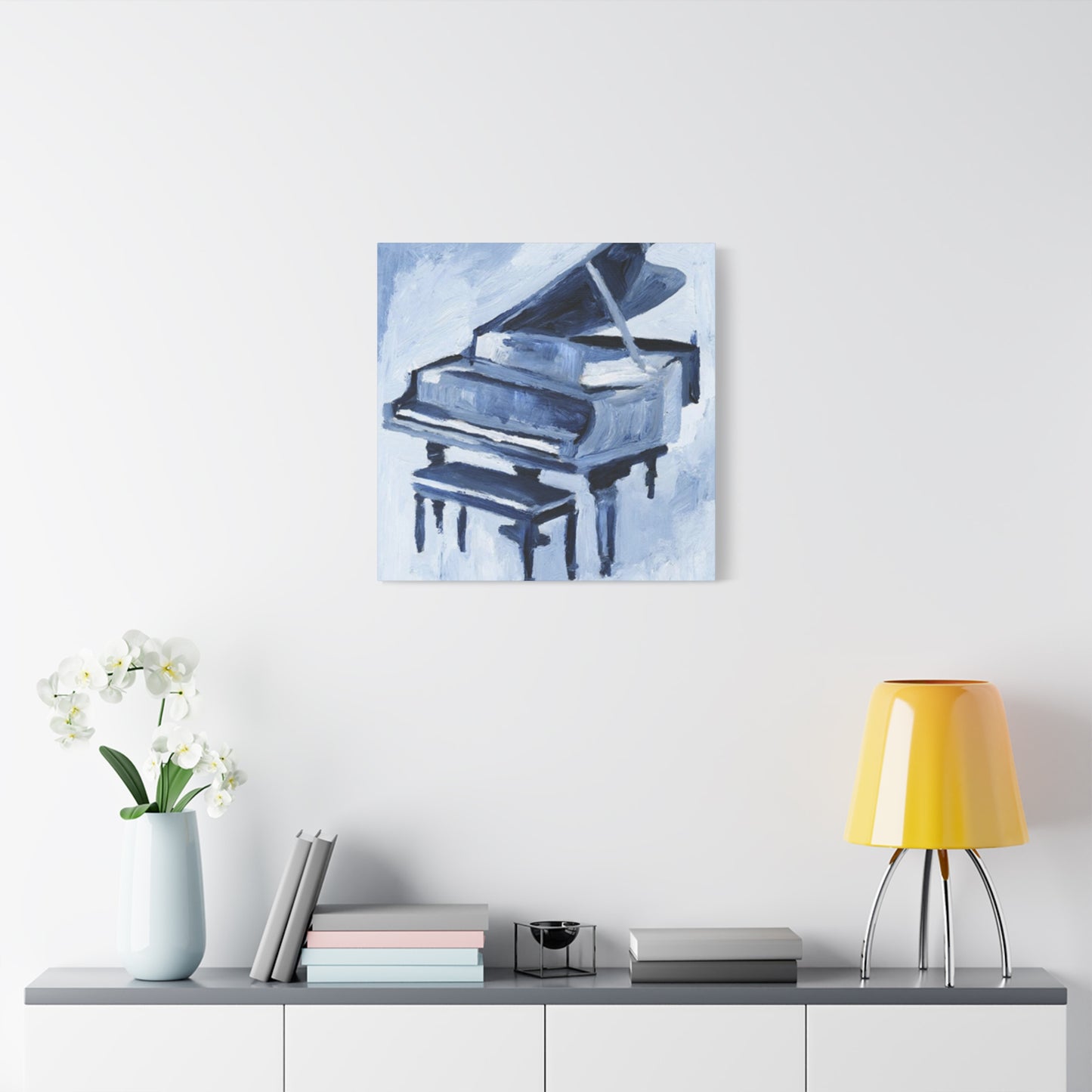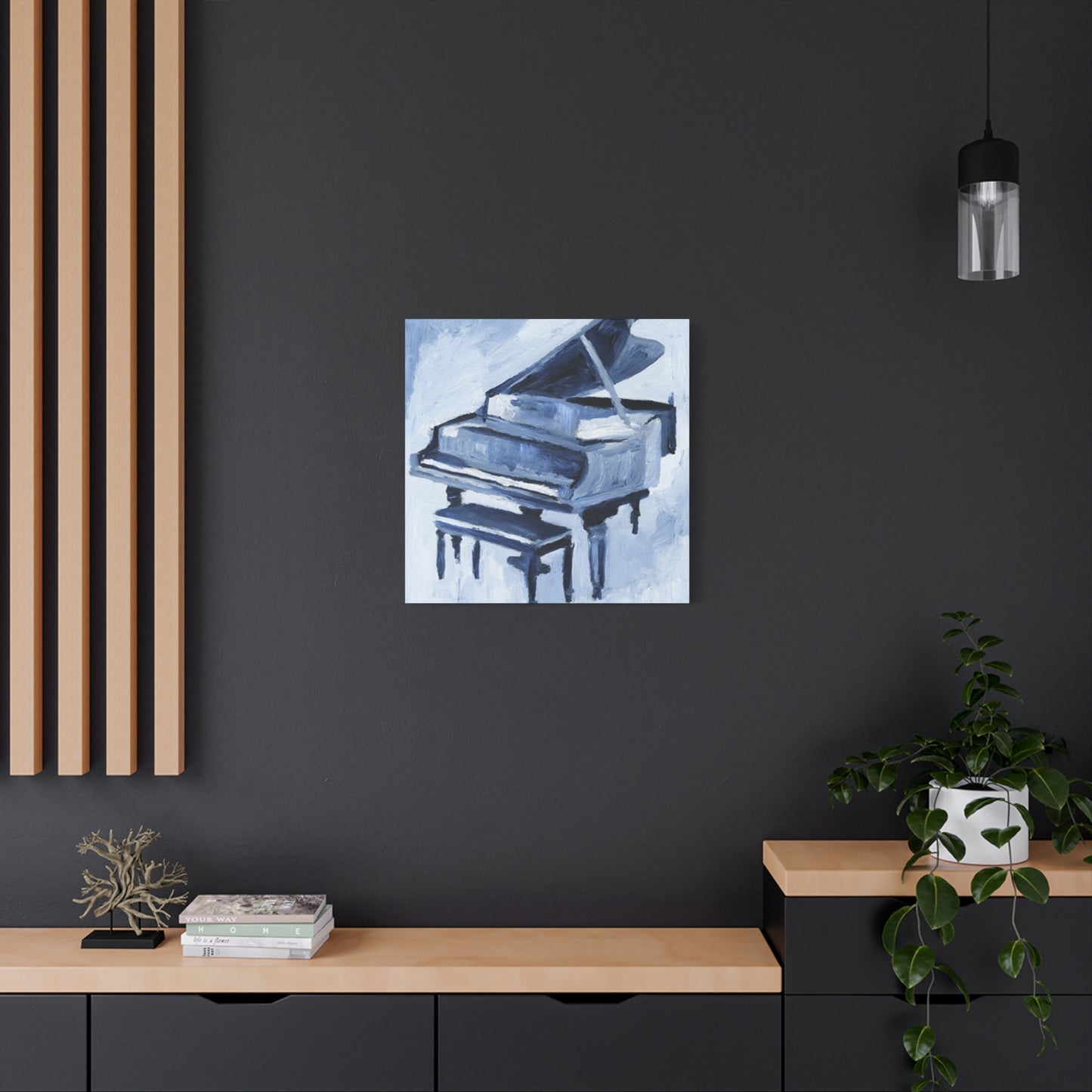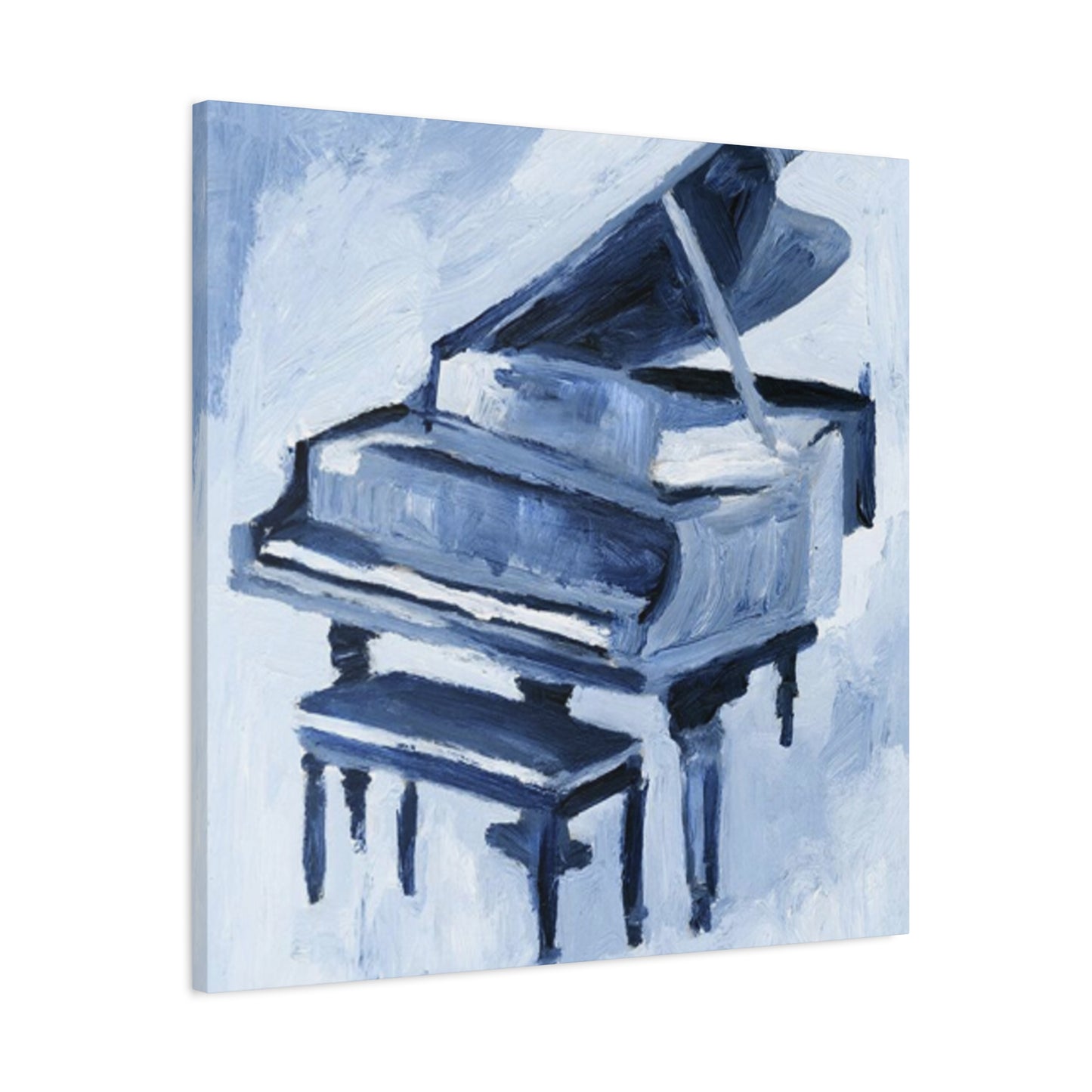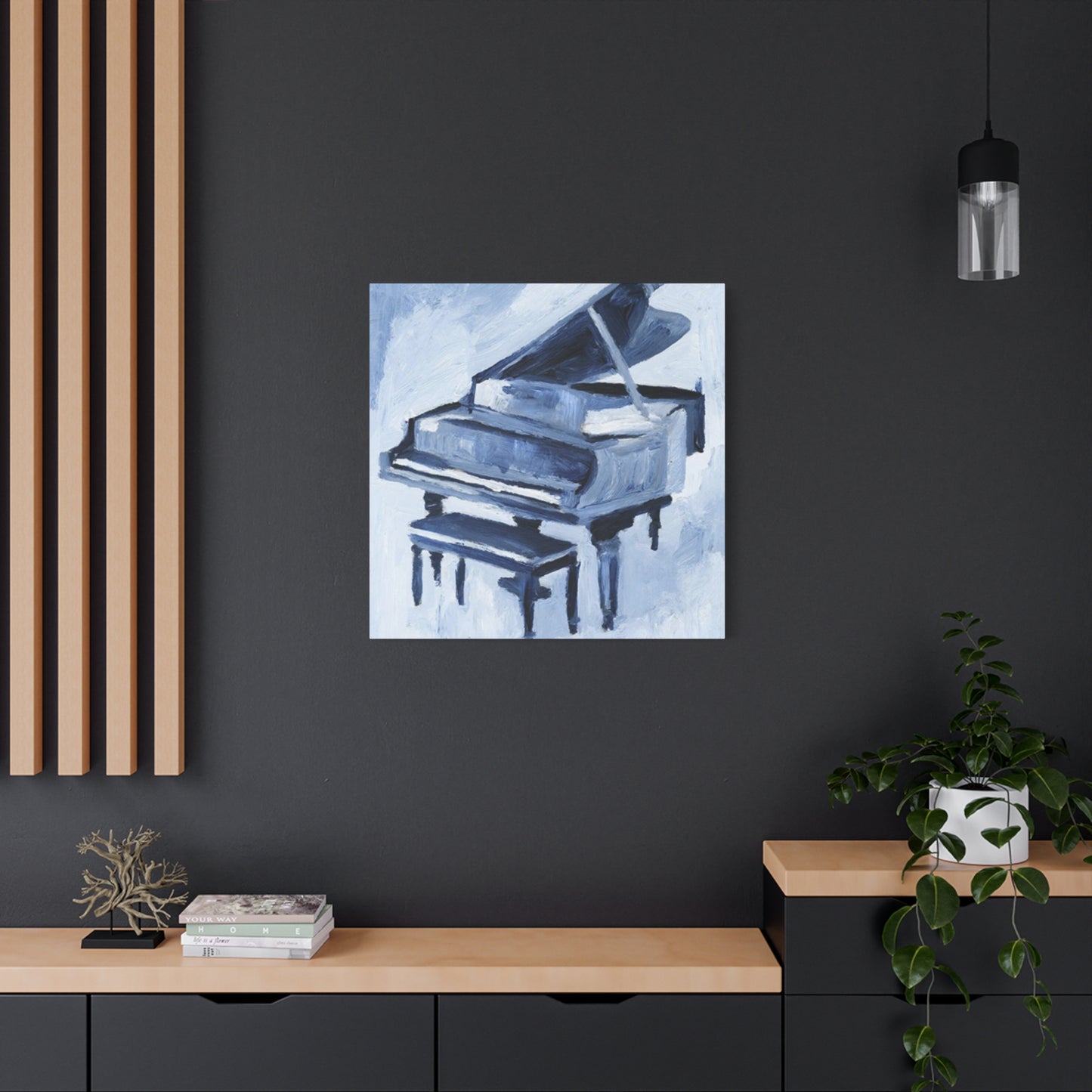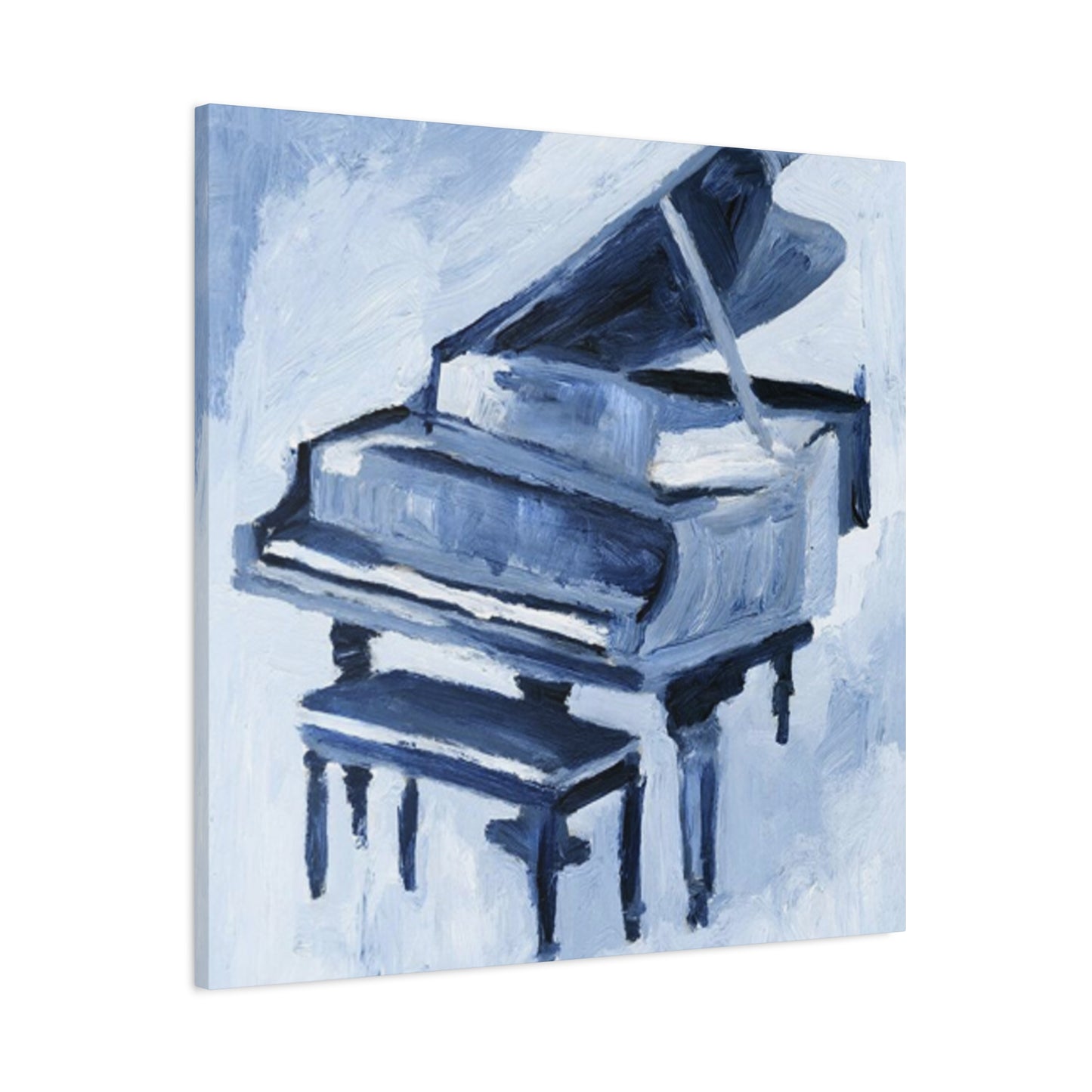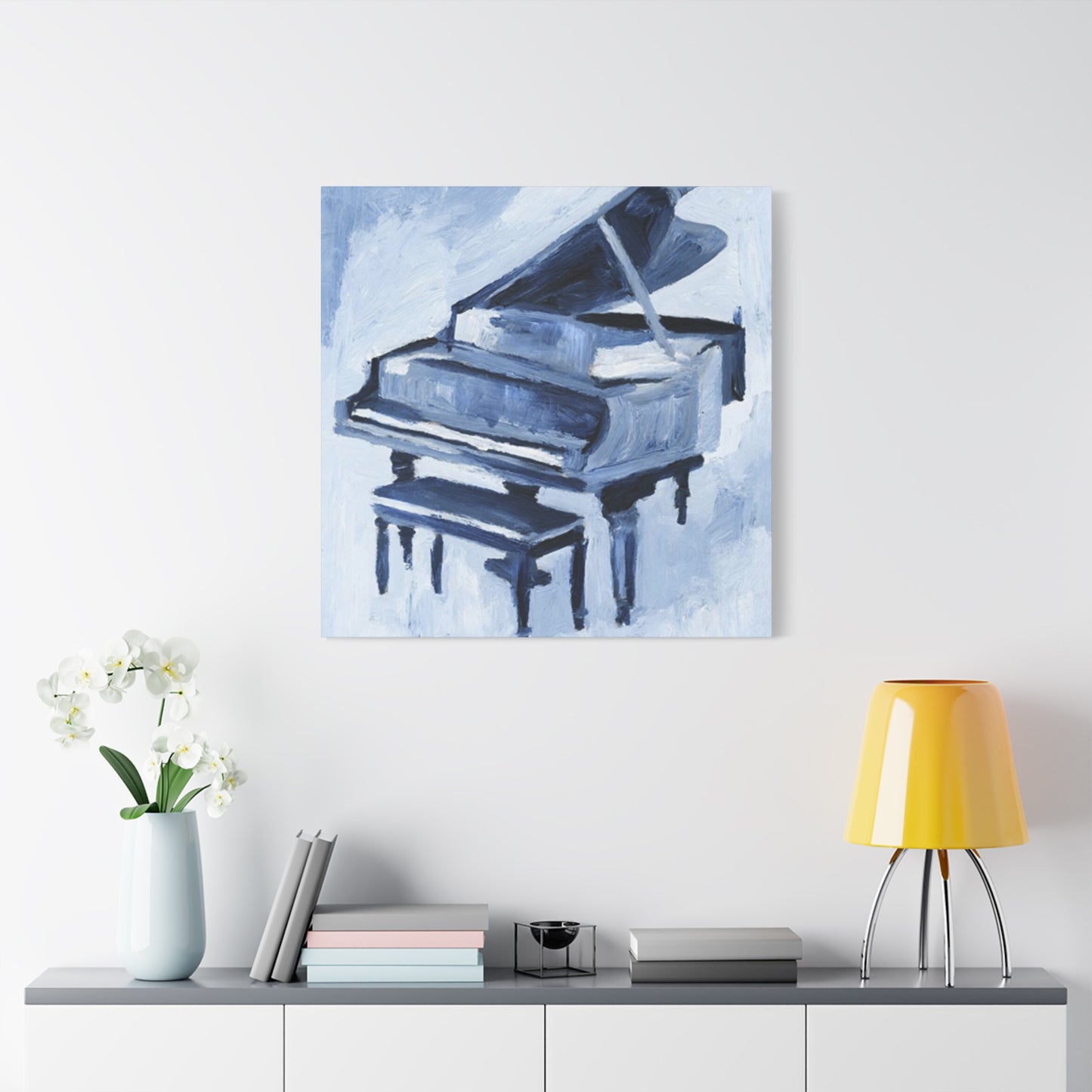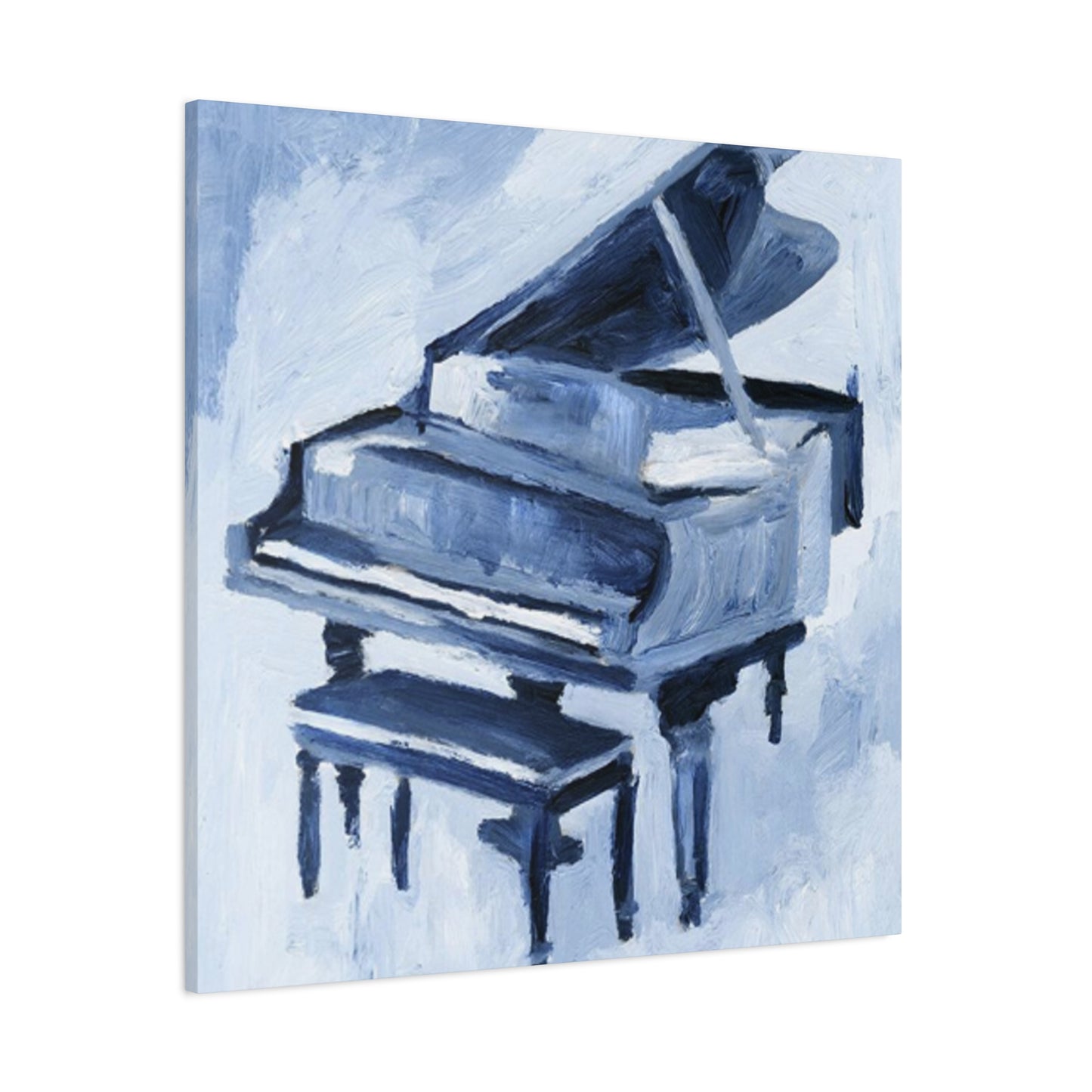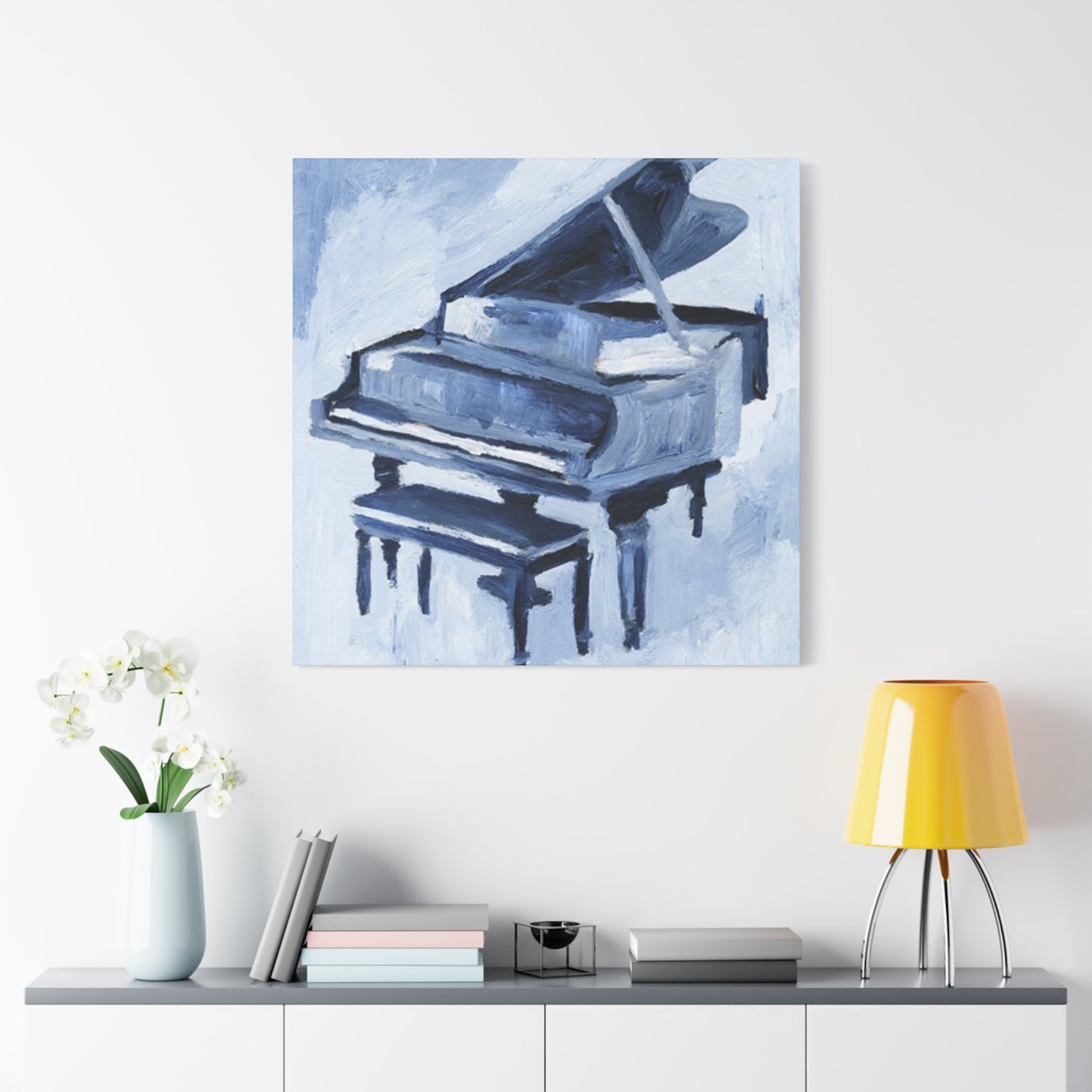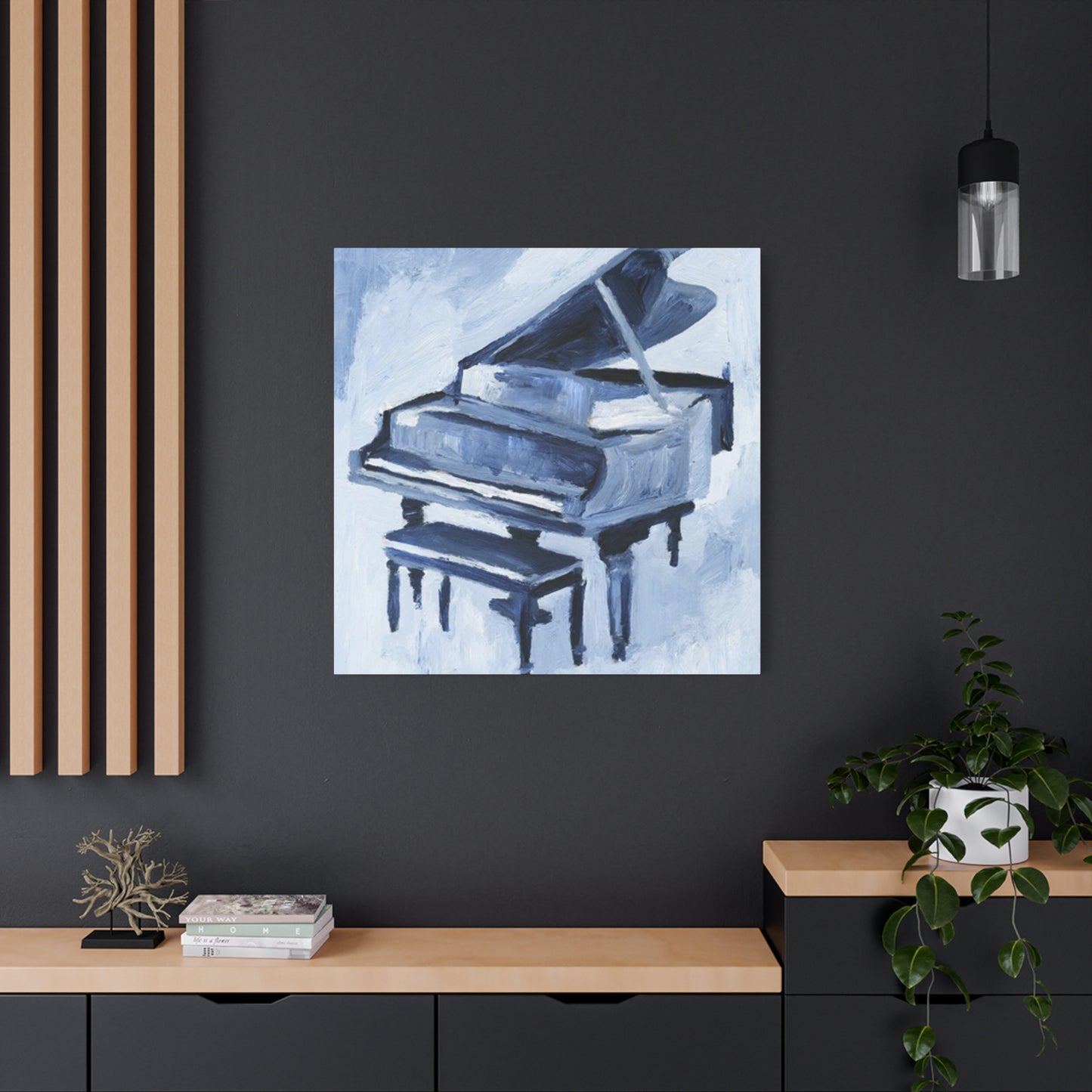Art Meets Music: Piano-Inspired Wall Art and Drawing painting
The intersection of musical composition and visual artistry represents one of humanity's most profound creative expressions. When piano melodies meet the canvas, pencil, and brush, an extraordinary transformation occurs that bridges auditory experiences with visual representation. This comprehensive exploration delves into the multifaceted relationship between piano music and visual arts, examining how sound translates into color, rhythm becomes stroke, and melody transforms into magnificent artistic creations.
The synesthetic relationship between music and visual art has captivated artists, musicians, and audiences for centuries. Piano music, with its rich tonal qualities and emotional depth, provides an exceptional foundation for artistic inspiration. Whether through direct interpretation of musical pieces or through the emotional responses they evoke, piano compositions have consistently served as catalysts for groundbreaking visual artwork.
Artists throughout history have found themselves drawn to the piano's unique ability to convey complex emotions through both individual notes and intricate harmonies. The instrument's dynamic range, from gentle whispers to thunderous crescendos, offers visual artists an extensive palette of inspiration from which to draw. This relationship extends beyond mere interpretation, creating a dialogue between two distinct yet interconnected forms of artistic expression.
Visualizing Musical Notes Through Artistic Expression
The process of translating piano music into visual art requires a deep understanding of both mediums and their inherent characteristics. Artists who engage in this practice often develop a heightened sensitivity to the subtle nuances within musical compositions, learning to recognize how different elements of piano music can be represented through various artistic techniques and visual elements.
Piano compositions possess unique structural elements that lend themselves exceptionally well to visual interpretation. The layered nature of piano music, with its ability to simultaneously present melody, harmony, and rhythm, mirrors the complexity achievable in visual artwork through layering colors, textures, and forms. This parallel structure creates natural opportunities for artists to explore corresponding visual representations of musical elements.
The temporal nature of music presents interesting challenges for visual artists seeking to capture piano compositions in static mediums. Unlike music, which unfolds over time, traditional visual art exists in a single moment. Artists have developed various techniques to address this challenge, including sequential panels, abstract representations of musical progression, and symbolic interpretations that capture the essence of temporal musical elements.
Color theory plays a crucial role in translating piano music into visual art. Many artists develop personal associations between specific musical notes, chords, and colors, creating consistent visual vocabularies for their musical interpretations. These associations often stem from emotional responses to particular musical elements, with warm colors representing major keys and lighter passages, while cooler colors might represent minor keys and more somber musical moments.
The texture and brushwork in piano-inspired artwork often mirror the articulation and phrasing found in piano performance. Smooth, flowing brushstrokes might represent legato passages, while sharp, distinct marks could correspond to staccato notes or percussive piano techniques. This direct correlation between musical articulation and artistic technique creates a tangible connection between the two art forms.
Artists working in this field often develop specialized techniques for representing different aspects of piano music. Some focus on the architectural structure of compositions, creating geometric representations of musical form and development. Others concentrate on the emotional content, using abstract expressionist techniques to convey the feelings evoked by particular pieces or passages.
Emotional Resonance in Piano-Inspired Visual Creation
The emotional dimension of piano music provides fertile ground for artistic exploration and visual interpretation. Piano compositions span the entire spectrum of human emotion, from the jubilant exuberance of celebratory pieces to the profound melancholy of introspective works. Visual artists draw upon this emotional richness to create artwork that resonates on multiple sensory levels.
Different piano composers evoke distinct emotional palettes that artists can explore through their visual interpretations. Classical composers like Chopin, with his romantic sensibilities and technical virtuosity, inspire artwork characterized by flowing lines, delicate details, and sophisticated color relationships. Contemporary composers might inspire more experimental visual approaches, incorporating unconventional materials and techniques that reflect modern musical innovations.
The personal emotional responses that individuals experience when listening to piano music add another layer of complexity to piano-inspired visual art. Artists often create works that represent their subjective emotional reactions to specific pieces, resulting in highly personalized interpretations that reflect both the music's inherent emotional content and the artist's individual psychological response.
Mood and atmosphere play significant roles in determining the visual approach artists take when interpreting piano music. Nocturnes might inspire dark, mysterious artwork with subtle lighting effects, while energetic etudes could result in dynamic compositions filled with movement and bold colors. The challenge lies in capturing not just the surface emotions but the deeper psychological states that piano music can evoke.
The technical aspects of piano performance also contribute to the emotional resonance of piano-inspired visual art. The physical gestures involved in piano playing, from gentle caresses of the keys to powerful, athletic movements, can be translated into corresponding artistic gestures. This physical connection between musical performance and artistic creation adds authenticity and vitality to the resulting artwork.
Artists often find that working with piano music as inspiration enhances their ability to express emotion through visual means. The music provides a framework for emotional exploration, offering specific emotional targets while allowing for personal interpretation and creative freedom. This guided yet flexible approach can lead to breakthrough artistic discoveries and emotional authenticity in visual work.
Synesthetic Connections Between Musical Sounds and Visual Colors
Synesthesia, the neurological phenomenon where stimulation of one sensory pathway leads to automatic experiences in another, provides fascinating insights into the natural connections between piano music and visual art. Many artists, whether naturally synesthetic or not, develop strong associations between musical elements and visual characteristics, creating consistent translation systems between auditory and visual experiences.
The relationship between specific musical notes and colors has been explored extensively by both scientists and artists. While these associations can be highly personal, certain patterns emerge across different individuals. Higher piano notes often correspond to lighter, brighter colors, while lower notes typically associate with darker, richer hues. These natural tendencies provide artists with intuitive starting points for their musical interpretations.
Harmonic relationships in piano music offer additional opportunities for color exploration. Major chords might translate to complementary color schemes that create visual harmony, while dissonant intervals could inspire clashing or tension-filled color combinations. The resolution of dissonance to consonance in music can be paralleled by the movement from color tension to color harmony in visual composition.
The dynamics of piano music provide another dimension for synesthetic exploration. Forte passages might inspire saturated, intense colors, while pianissimo sections could translate to subtle, muted tones. The gradual changes in dynamics, such as crescendos and diminuendos, can be represented through gradual color transitions or changes in color intensity across the artwork.
Rhythm and meter in piano compositions create opportunities for exploring pattern and repetition in visual art. Regular rhythmic patterns might translate to geometric repetitions or structured compositions, while irregular rhythms could inspire more organic, free-flowing visual elements. The interplay between different rhythmic layers in complex piano compositions can be mirrored through overlapping visual patterns and textures.
Timbre, the unique quality of sound that distinguishes different instruments or playing techniques, presents interesting challenges for visual interpretation. The piano's distinctive tonal characteristics, including its attack, sustain, and decay properties, can be translated into specific artistic techniques. Sharp attacks might correspond to precise, defined edges in artwork, while sustained tones could inspire smooth gradations and flowing forms.
Techniques for Creating Piano Music-Inspired Artwork
Artists working with piano music as inspiration employ a wide variety of techniques and approaches to translate auditory experiences into visual form. These techniques range from literal interpretations of musical notation to highly abstract emotional responses, each offering unique possibilities for artistic exploration and expression.
Direct notation interpretation represents one approach to piano-inspired artwork, where artists create visual representations that correspond closely to written musical scores. This might involve translating the vertical arrangement of notes into corresponding visual elements, using the spatial relationships inherent in musical notation as compositional guides for visual artwork. Such approaches often result in artwork that maintains clear connections to the source musical material while offering fresh perspectives on familiar compositions.
Abstract expressionist techniques prove particularly well-suited to capturing the emotional and energetic aspects of piano music. Artists might use gestural brushwork that mirrors the physical movements involved in piano performance, creating artwork that embodies the kinetic energy of musical interpretation. Color relationships in such works often reflect the harmonic content of the inspiring music, while compositional structure might parallel the formal organization of musical pieces.
Layering techniques in visual art can effectively represent the polyphonic nature of piano music. Just as piano compositions often feature multiple melodic lines occurring simultaneously, artists can create layered visual compositions that reveal different elements upon closer examination. This approach allows for the representation of musical complexity while creating visually engaging artwork that rewards sustained attention.
Mixed media approaches offer expanded possibilities for representing the multifaceted nature of piano music. Artists might incorporate actual sheet music into their artwork, creating collages that blend visual representation with musical notation. Three-dimensional elements can be added to represent the physical aspects of piano performance, while various textures can correspond to different timbral qualities within the music.
Digital art techniques have opened new frontiers for piano-inspired visual creation. Artists can use software to create real-time visualizations of piano performances, generating artwork that changes and evolves in direct response to musical input. These technologies allow for exploration of the temporal aspects of music in ways that traditional static art cannot achieve, creating new possibilities for representing the unfolding nature of musical experience.
Color gradation techniques prove especially effective for representing the continuous nature of piano sound and the smooth transitions between notes and chords. Artists can use gradual color changes to represent glissandos, pitch bends, and the natural decay of piano notes. These techniques create visual analogies for the flowing, connected nature of musical phrasing and expression.
Exploring Different Piano Genres Through Visual Representation
The diverse world of piano music encompasses numerous genres and styles, each presenting unique opportunities and challenges for visual interpretation. From classical masterworks to contemporary experimental compositions, different piano genres inspire correspondingly varied approaches to visual representation.
Classical piano repertoire, with its emphasis on formal structure and traditional harmonic language, often inspires visual artwork that reflects these organizational principles. Sonata forms might translate to visual compositions with clear thematic statements, developments, and recapitulations. The balanced proportions characteristic of classical composition can inspire similarly balanced visual arrangements, while the ornamental elements common in baroque and rococo piano music might inspire decorative visual details and embellishments.
Romantic piano music, characterized by emotional intensity and expressive freedom, provides rich material for artists interested in capturing and conveying deep emotional states. The expanded harmonic vocabulary of romantic composers offers artists broader color palettes and more complex tonal relationships to explore. The programmatic elements often present in romantic piano music, where compositions tell stories or paint musical pictures, create natural bridges to visual representation.
Jazz piano presents unique challenges and opportunities for visual artists. The improvisational nature of jazz requires artistic techniques that can capture spontaneity and creative freedom while maintaining structural coherence. The syncopated rhythms characteristic of jazz might inspire visual artwork with unexpected emphases and rhythmic variety. The harmonic complexity of jazz, including extended chords and chromatic progressions, can translate to sophisticated color relationships and unexpected visual harmonies.
Contemporary classical piano music often employs extended techniques and unconventional approaches that inspire correspondingly experimental visual interpretations. Prepared piano techniques, where objects are placed on or between piano strings to alter the sound, might inspire artwork incorporating found objects or unconventional materials. Electronic processing of piano sounds could translate to digital manipulation of visual images or hybrid analog-digital artistic approaches.
Popular piano music, including styles ranging from pop ballads to rock piano, offers opportunities to explore the visual representation of music designed for broad appeal and emotional accessibility. The clear melodic lines and straightforward harmonic progressions common in popular music can inspire visually direct and emotionally clear artistic interpretations that communicate effectively with diverse audiences.
Minimalist piano compositions, characterized by repetitive patterns and gradual development, inspire visual artwork that explores similar principles of repetition, variation, and subtle change over time. Artists might create serial works that present slight variations on basic visual themes, mirroring the developmental techniques employed in minimalist compositions. The meditative qualities often present in minimalist piano music can inspire contemplative visual artwork designed to encourage sustained attention and reflection.
Historical Connections Between Piano Music and Visual Arts
The relationship between piano music and visual arts extends deep into art history, with numerous documented instances of cross-pollination between musical and visual creators. These historical connections provide context for contemporary explorations while offering insights into the enduring appeal of combining auditory and visual artistic experiences.
The Romantic era witnessed particularly strong connections between piano music and visual arts. Painters like Eugene Delacroix maintained friendships with pianists and composers, finding inspiration in their musical performances and compositions. The emotional intensity and expressive freedom characteristic of romantic piano music aligned closely with the artistic goals of romantic painters, leading to natural collaborations and mutual influences.
The Impressionist movement in visual arts found parallel expression in piano composition, with composers like Claude Debussy creating musical works that employed similar techniques to those used by Impressionist painters. The emphasis on color, atmosphere, and subjective perception that characterized Impressionist painting found musical expression in piano compositions that prioritized tonal color and atmospheric effects over traditional structural concerns.
The early twentieth century saw experimental artists and musicians working together to explore new forms of artistic expression. Groups like the Bauhaus school included both visual artists and musicians who collaborated on multimedia projects that combined visual and auditory elements. These early experiments in interdisciplinary art-making laid groundwork for contemporary multimedia and installation art that incorporates both piano music and visual elements.
Abstract art movements found natural connections with the non-representational aspects of instrumental music. Artists like Wassily Kandinsky wrote extensively about the relationship between color and sound, developing theoretical frameworks for understanding how visual and auditory experiences could correspond and interact. These theories influenced generations of artists seeking to create visual interpretations of musical works.
The development of recording technology in the twentieth century changed the relationship between piano music and visual arts by making musical works more widely accessible. Artists could repeatedly listen to the same performances, studying musical works in detail and developing increasingly sophisticated visual interpretations. This technological advancement democratized access to musical inspiration while enabling more detailed and nuanced artistic responses to piano compositions.
Contemporary art has seen continued exploration of piano-music connections through installation art, multimedia performances, and digital art forms. Artists create environments where audiences can experience both visual and auditory elements simultaneously, often with interactive components that allow viewers to influence both the visual and musical elements through their actions and movements.
Developing Personal Artistic Responses to Piano Compositions
Creating meaningful visual artwork inspired by piano music requires developing personal approaches that honor both the source material and individual artistic vision. Artists must navigate between faithful representation and creative interpretation, finding ways to capture the essence of musical works while expressing their unique perspectives and artistic sensibilities.
The process often begins with deep listening and musical analysis. Artists spend time studying piano compositions they wish to interpret, learning to identify key musical elements such as melodic lines, harmonic progressions, rhythmic patterns, and structural organization. This analytical understanding provides a foundation for informed artistic interpretation while identifying specific musical elements that might translate effectively into visual form.
Developing a personal vocabulary of visual-musical correspondences represents a crucial step in creating consistent and meaningful piano-inspired artwork. Artists might experiment with different ways of representing musical elements, gradually developing preferred techniques for translating specific musical characteristics into visual form. These personal systems allow for the creation of coherent bodies of work while maintaining flexibility for creative exploration and growth.
Emotional authenticity plays a vital role in creating compelling piano-inspired visual art. Artists must connect personally with the musical works they choose to interpret, finding genuine emotional responses that can fuel authentic artistic expression. This personal connection ensures that resulting artwork communicates sincere emotional content rather than merely decorative interpretation of musical structures.
Technical experimentation allows artists to discover new possibilities for representing piano music through visual means. This might involve exploring unfamiliar artistic media, developing hybrid techniques that combine different approaches, or investigating digital tools that offer new possibilities for musical visualization. Such experimentation can lead to breakthrough discoveries and innovative approaches to the challenge of translating auditory experiences into visual form.
Collaborative approaches can enhance the development of piano-inspired artwork through interaction with musicians, composers, and other artists. Working directly with pianists provides opportunities to observe the physical aspects of musical performance and to understand interpretive decisions that might not be apparent from recordings alone. Such collaborations can lead to deeper understanding of musical works and more informed artistic interpretations.
Documentation and reflection help artists develop their approaches over time by providing opportunities to analyze successful techniques and identify areas for improvement. Maintaining records of artistic processes, including preliminary sketches, color studies, and written reflections, creates resources for future reference and continued development of piano-inspired artistic practices.
The Therapeutic Benefits of Combining Piano Music and Art Creation
The combination of piano music and art creation offers significant therapeutic benefits, providing individuals with powerful tools for emotional expression, stress relief, and personal growth. This interdisciplinary approach to creative expression can be particularly effective because it engages multiple sensory channels and cognitive processes simultaneously.
Music therapy has long recognized the healing power of musical experience, while art therapy has demonstrated the therapeutic value of visual creative expression. Combining these approaches through piano-inspired art creation creates synergistic effects that can be more powerful than either modality alone. The emotional accessibility of piano music provides entry points for creative expression, while visual art creation offers concrete ways to externalize and process emotional experiences.
Stress reduction represents one of the most immediate benefits of engaging in piano-inspired art creation. The focused attention required for both listening to music and creating visual art can induce meditative states that promote relaxation and reduce anxiety. The flowing, process-oriented nature of artistic creation, guided by the temporal structure of musical compositions, can help individuals achieve states of flow that are inherently therapeutic and restorative.
Emotional processing benefits arise from the ability of both music and visual art to access and express emotions that might be difficult to articulate verbally. Piano music can evoke complex emotional states while art creation provides concrete ways to explore, express, and transform these emotions through visual means. This combination offers individuals safe and constructive outlets for processing difficult emotions and experiences.
Creative problem-solving skills develop through the challenge of translating auditory experiences into visual form. This process requires innovative thinking, flexible approaches, and willingness to experiment with new ideas. These cognitive skills transfer to other life areas, enhancing individuals' abilities to approach challenges with creativity and resilience.
Self-expression opportunities expand through the combination of musical and visual elements. Individuals can explore aspects of their personalities and experiences through both their responses to piano music and their visual artistic expressions. This multi-modal approach to self-expression can reveal insights and perspectives that might not emerge through single-medium creative work.
Social connections can develop through shared experiences of piano-inspired art creation. Group activities that combine music listening and art creation provide opportunities for meaningful interaction and mutual support. Participants can share their interpretations and responses while learning from others' perspectives and approaches.
Piano-Inspired Visual Arts
Piano-inspired visual arts offer rich educational opportunities across multiple disciplines, providing engaging ways to explore concepts in music education, art education, and interdisciplinary studies. These approaches can enhance learning by appealing to different learning styles and by creating memorable multi-sensory experiences that reinforce educational content.
Music education benefits from visual art activities that help students understand musical concepts through alternative modalities. Creating visual representations of musical elements such as rhythm, melody, harmony, and form can deepen students' understanding of these concepts while providing concrete reference points for abstract musical ideas. Students who struggle with traditional musical notation might find visual approaches more accessible and engaging.
Art education can incorporate piano music as inspiration for various artistic projects, introducing students to the possibilities of cross-disciplinary creative work. Students can explore different artistic media and techniques while learning to respond to auditory stimuli through visual means. This approach can expand students' creative vocabularies while developing their abilities to find inspiration from diverse sources.
Interdisciplinary education opportunities arise naturally from piano-inspired visual arts projects. Students can explore connections between music and visual arts while also investigating historical, cultural, and scientific dimensions of these relationships. Such projects can demonstrate the interconnected nature of different fields of study while developing students' abilities to think across disciplinary boundaries.
Critical thinking skills develop through the analysis required to create meaningful piano-inspired artwork. Students must listen carefully to musical works, identify significant elements, and make decisions about how to represent these elements visually. This process develops analytical skills while encouraging creative problem-solving and innovative thinking.
Cultural understanding can be enhanced through exploration of piano music and visual arts from different cultural traditions. Students can investigate how different cultures approach the relationship between music and visual representation, developing appreciation for diverse artistic traditions while understanding common human tendencies toward cross-sensory artistic expression.
Assessment opportunities in piano-inspired visual arts education can be both formative and summative, focusing on process as well as product. Teachers can evaluate students' understanding of musical concepts, their creative problem-solving approaches, their technical artistic skills, and their ability to articulate connections between musical and visual elements. This multi-faceted assessment approach provides comprehensive evaluation of student learning and growth.
Contemporary Artists Working with Piano-Inspired Themes
The contemporary art world includes numerous artists who specifically focus on piano-inspired themes and piano-visual art relationships. These artists represent diverse approaches to the challenge of translating piano music into visual form while developing innovative techniques and conceptual frameworks for interdisciplinary artistic work.
Abstract artists working with piano inspiration often focus on the emotional and energetic aspects of piano music, creating non-representational works that capture the essence of musical experience through color, form, and composition. These artists might develop personal systems for translating musical elements into visual equivalents, creating consistent visual vocabularies that allow for the development of coherent artistic statements across multiple works.
Installation artists create immersive environments that combine visual and auditory elements, often incorporating actual piano performances or recorded piano music alongside visual components. These artists explore the temporal dimensions of musical experience through spatial arrangements that guide viewers through sequential visual experiences that correspond to musical developments and progressions.
Digital artists employ technology to create real-time visualizations of piano performances, developing software and hardware systems that generate visual responses to musical input. This work often explores the possibilities for live, interactive relationships between musical performance and visual display, creating new forms of multimedia performance that combine traditional piano artistry with cutting-edge visual technology.
Multimedia performance artists create works that incorporate both piano performance and visual art creation, often working collaboratively with pianists to develop performances that feature simultaneous musical and visual creation. These performances can take various forms, from solo artist-musicians who create visual art while performing piano music to collaborative teams that coordinate musical and visual elements in real-time.
Conceptual artists explore the theoretical and philosophical dimensions of piano-visual art relationships, creating works that investigate questions about synesthesia, cross-sensory perception, and the fundamental relationships between different artistic modalities. These artists might create documentation of their perceptual experiences or develop systematic approaches to translation between auditory and visual domains.
Sculptural artists create three-dimensional works inspired by piano music, often exploring the physical and architectural dimensions of musical experience. These works might incorporate actual piano components, create spatial analogies for musical structures, or develop tactile interpretations of musical elements that can be experienced through touch as well as sight.
Technical Approaches to Musical Visualization
The technical aspects of creating visual representations of piano music involve various methodologies, tools, and theoretical frameworks that can enhance the effectiveness and sophistication of piano-inspired artwork. Understanding these technical dimensions can help artists develop more informed and intentional approaches to their creative work.
Color theory provides fundamental principles for translating musical elements into visual form. Artists can employ various color systems, including traditional color wheels, digital color spaces, and psychological color associations, to develop systematic approaches to representing musical content. Understanding complementary colors, analogous relationships, and color temperature can help artists create visual compositions that effectively parallel musical harmonic relationships and emotional content.
Compositional techniques from visual art can be adapted to reflect musical structural principles. The rule of thirds, golden ratio proportions, and various approaches to visual balance can be employed to create visual compositions that mirror the proportional relationships and structural organization found in piano compositions. Artists might analyze the formal structures of musical works and translate these analyses into corresponding visual organizational systems.
Digital visualization software offers sophisticated tools for creating piano-inspired artwork, including programs specifically designed for musical visualization as well as general graphics software that can be adapted for musical purposes. Understanding the capabilities and limitations of these tools can help artists choose appropriate technologies for their artistic goals while avoiding technical constraints that might limit creative expression.
Motion graphics techniques can address the temporal dimension of piano music through visual animations that unfold over time in correspondence with musical developments. Artists can create time-based visual works that parallel musical compositions, using techniques such as morphing, particle systems, and keyframe animation to represent musical elements that change and develop over time.
Data visualization principles can be applied to the systematic representation of musical information, including pitch relationships, rhythmic patterns, harmonic progressions, and formal structures. Artists can employ various charting and graphing techniques to create visual representations that accurately reflect quantifiable aspects of musical compositions while maintaining artistic and aesthetic appeal.
Interactive technology enables the creation of responsive systems that generate visual output in real-time response to piano performance input. Understanding sensor technology, computer programming, and audio processing can help artists develop systems that create dynamic relationships between musical performance and visual display, opening possibilities for live, interactive piano-visual art experiences.
Building a Portfolio of Piano-Inspired Artwork
Developing a cohesive portfolio of piano-inspired artwork requires strategic planning, consistent development of personal artistic vision, and careful curation of finished works. Artists working in this specialized area must balance technical skill development with conceptual growth while creating bodies of work that demonstrate both individual pieces' merit and overall portfolio coherence.
Theme development represents a crucial aspect of portfolio building, as artists must identify specific approaches or concepts that will guide their exploration of piano-visual relationships. This might involve focusing on particular composers, musical periods, emotional themes, or technical approaches to visualization. Having clear thematic focus helps ensure portfolio coherence while providing framework for artistic development and growth.
Technical skill progression should be evident throughout a piano-inspired art portfolio, demonstrating the artist's growing sophistication in both musical understanding and visual representation techniques. Early works might show fundamental explorations of piano-visual relationships, while later pieces should demonstrate increased complexity, refinement, and personal artistic voice development.
Variety within unity represents an important portfolio balance, as artists must demonstrate range and versatility while maintaining recognizable artistic identity and consistent quality. This might involve exploring different musical genres, employing various visual media, or investigating diverse emotional or conceptual themes while maintaining consistent underlying approaches to piano-visual translation.
Documentation of artistic process can strengthen portfolio presentation by providing insight into the artist's working methods and conceptual development. This might include preliminary sketches, color studies, written reflections on specific musical works, or video documentation of artistic creation processes. Such materials can help viewers understand the thoughtful approach behind finished works while demonstrating the artist's serious engagement with both musical and visual elements.
Professional presentation standards are essential for piano-inspired art portfolios, including high-quality photography of artworks, consistent formatting of written materials, and clear organization of portfolio contents. Artists should consider how their works will be viewed in various contexts, including digital presentation, print portfolios, and gallery exhibition settings.
Artist statement development helps articulate the conceptual framework underlying piano-inspired artwork while providing context for viewers who might be unfamiliar with cross-disciplinary artistic approaches. Clear communication of artistic goals, working methods, and conceptual interests can help audiences understand and appreciate the unique challenges and opportunities inherent in piano-visual art creation.
Public Art and Piano-Inspired Installations
Piano-inspired public art and installations offer opportunities to bring the piano-visual art relationship to broader audiences while exploring the social and community dimensions of interdisciplinary artistic experience. These large-scale projects can transform public spaces while providing educational and cultural enrichment for diverse communities.
Site-specific considerations are crucial for successful piano-inspired public art projects, as artists must consider how their works will interact with existing architectural and environmental contexts. The acoustic properties of public spaces might influence decisions about incorporating actual piano performance elements, while environmental factors such as weather exposure and vandalism resistance must be addressed in material and design choices.
Community engagement can be enhanced through public art projects that invite participation or interaction from community members. This might involve creating installations that respond to ambient sound, incorporating opportunities for public piano performance, or developing educational components that help community members understand the relationships being explored through the artwork.
Interactive elements can make piano-inspired public art more engaging and accessible to diverse audiences. Touch-sensitive surfaces might trigger piano sounds and corresponding visual changes, allowing community members to explore piano-visual relationships through direct interaction. Such elements can be particularly effective for reaching audiences who might not typically engage with either piano music or visual art.
Educational programming can extend the impact of piano-inspired public art by providing opportunities for community learning and engagement. Artists might collaborate with local schools, music organizations, or arts centers to develop workshops, performances, or educational materials that help community members understand and appreciate the concepts being explored through the public artwork.
Maintenance and longevity considerations are essential for successful public art projects, requiring careful attention to material choices, structural engineering, and ongoing care requirements. Artists must balance artistic vision with practical concerns about how their works will age and function over time in public environments.
Funding and collaboration opportunities for piano-inspired public art might involve partnerships with music organizations, educational institutions, arts councils, and community development organizations. These collaborations can provide both financial support and institutional expertise while creating opportunities for cross-sector partnership building and community network development.
Future Directions in Piano-Visual Art Integration
The field of piano-inspired visual art continues to evolve, driven by technological advances, changing artistic practices, and growing interest in interdisciplinary creative work. Understanding emerging trends and future possibilities can help artists, educators, and institutions prepare for new developments while identifying opportunities for innovation and growth.
Virtual and augmented reality technologies offer unprecedented possibilities for creating immersive piano-visual art experiences. Artists can develop virtual environments where users can experience piano music through multiple sensory channels simultaneously, including visual, auditory, and potentially tactile feedback. These technologies might enable new forms of performance where audiences can step inside visual representations of piano music or interact with three-dimensional musical visualizations.
Artificial intelligence and machine learning applications in piano-visual art could automate certain aspects of the translation process while opening new creative possibilities. AI systems might learn to generate visual responses to piano music based on large datasets of human-created examples, while machine learning could identify patterns in piano-visual relationships that might not be apparent to human analysis.
Biometric feedback integration could personalize piano-visual art experiences by incorporating information about viewers' physiological responses to musical and visual stimuli. Sensors that monitor heart rate, brain activity, or other biological indicators could influence visual displays, creating customized experiences that respond to individual viewers' reactions to piano music.
Global connectivity and online collaboration platforms enable artists from different geographical locations to work together on piano-inspired visual art projects. Musicians and visual artists can collaborate remotely, sharing musical performances and visual responses across international boundaries while developing new models for interdisciplinary artistic collaboration.
Sustainability considerations are becoming increasingly important in all artistic practices, including piano-inspired visual art. Artists are exploring environmentally responsible materials and production methods while investigating how technology-based approaches might reduce environmental impact compared to traditional material-intensive art production methods.
Educational integration continues to expand as institutions recognize the value of interdisciplinary artistic experiences for student learning and engagement. Future developments might include specialized degree programs focused on music-visual art integration, research initiatives investigating the cognitive and therapeutic benefits of cross-sensory artistic experiences, and professional development programs for educators interested in incorporating interdisciplinary approaches into their teaching practices.
Conclusion
The exploration of piano-inspired visual arts reveals a rich and complex landscape where musical expression finds visual form through countless creative interpretations. This comprehensive examination has demonstrated how the relationship between piano music and visual art extends far beyond simple illustration, encompassing sophisticated theoretical frameworks, innovative technical approaches, and profound emotional connections that enrich both artistic traditions.
Throughout history, artists have consistently found inspiration in the unique qualities of piano music, drawn to its exceptional range of expression, its capacity for both intimate and grand gestures, and its ability to convey complex emotions through purely abstract sound. The piano's distinctive tonal characteristics, its polyphonic capabilities, and its dynamic range provide visual artists with an extraordinarily rich source of creative inspiration that continues to yield new artistic discoveries and innovative approaches to cross-disciplinary creative work.
The technical aspects of translating piano music into visual form have evolved significantly, incorporating traditional artistic techniques alongside cutting-edge digital technologies. From direct notational interpretation to abstract emotional expression, from real-time interactive installations to carefully crafted static compositions, artists have developed diverse methodologies for bridging the gap between auditory and visual experience. These technical innovations have expanded the possibilities for piano-visual art while maintaining connection to fundamental human experiences of music and visual beauty.
The educational applications of piano-inspired visual arts demonstrate the value of interdisciplinary approaches to learning and creative development. Students benefit from multi-sensory educational experiences that engage different learning styles while providing concrete ways to explore abstract concepts in both music and visual art. These educational approaches prepare students for increasingly interdisciplinary creative and professional environments while developing critical thinking skills and creative problem-solving abilities that serve them throughout their lives.
The therapeutic dimensions of piano-inspired visual art creation offer significant benefits for emotional processing, stress reduction, and personal growth. The combination of musical listening and visual creation provides powerful tools for self-expression and emotional exploration while creating accessible entry points for individuals who might find purely musical or purely visual approaches less engaging or effective.
Contemporary artists continue to push the boundaries of piano-visual art integration, developing innovative approaches that incorporate new technologies, explore fresh conceptual frameworks, and reach diverse audiences through public art, installation work, and multimedia performance. Their work demonstrates the continued vitality and relevance of interdisciplinary artistic practices while pointing toward future possibilities for creative exploration and artistic innovation.
Looking toward the future, piano-inspired visual arts appear poised for continued growth and evolution. Emerging technologies offer unprecedented possibilities for immersive, interactive experiences while global connectivity enables new forms of collaborative artistic creation. The growing recognition of interdisciplinary arts' educational and therapeutic value suggests continued institutional support and public interest in these creative practices.
The enduring appeal of combining piano music with visual art ultimately stems from fundamental aspects of human perception and creativity. Our natural tendency toward synesthetic experience, our desire to find connections between different sensory modalities, and our innate drive to express complex emotions through creative means ensure that piano-inspired visual arts will continue to flourish and evolve.
As we conclude this extensive exploration, it becomes clear that piano-inspired visual arts represent far more than a simple combination of two artistic traditions. They constitute a unique creative territory where musical and visual expressions enhance and transform each other, creating new possibilities for artistic meaning and human connection. Whether through intimate personal creative practice, educational exploration, therapeutic application, or public artistic experience, the integration of piano music and visual art continues to offer profound opportunities for creative discovery and meaningful engagement with both auditory and visual dimensions of artistic expression.

















